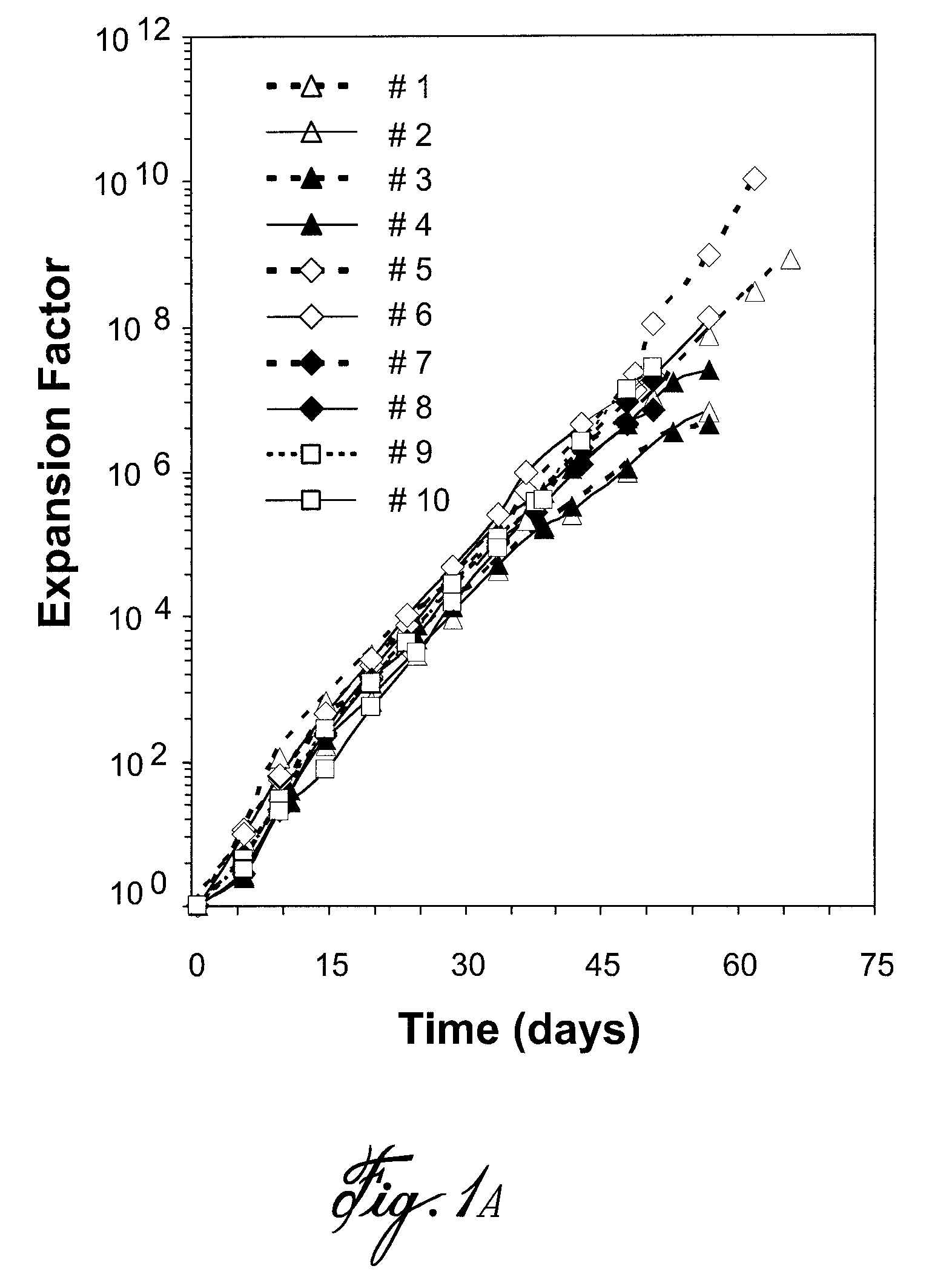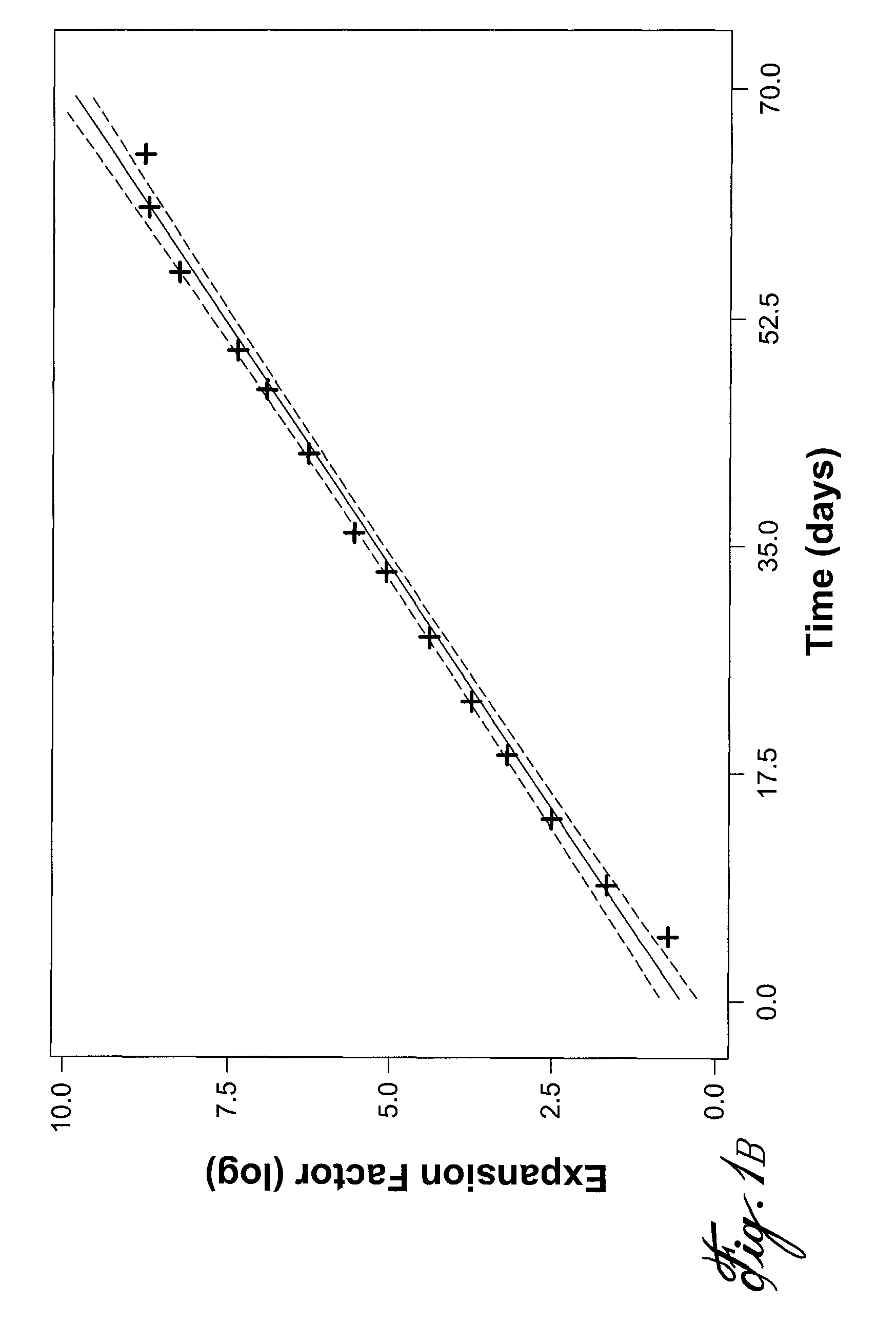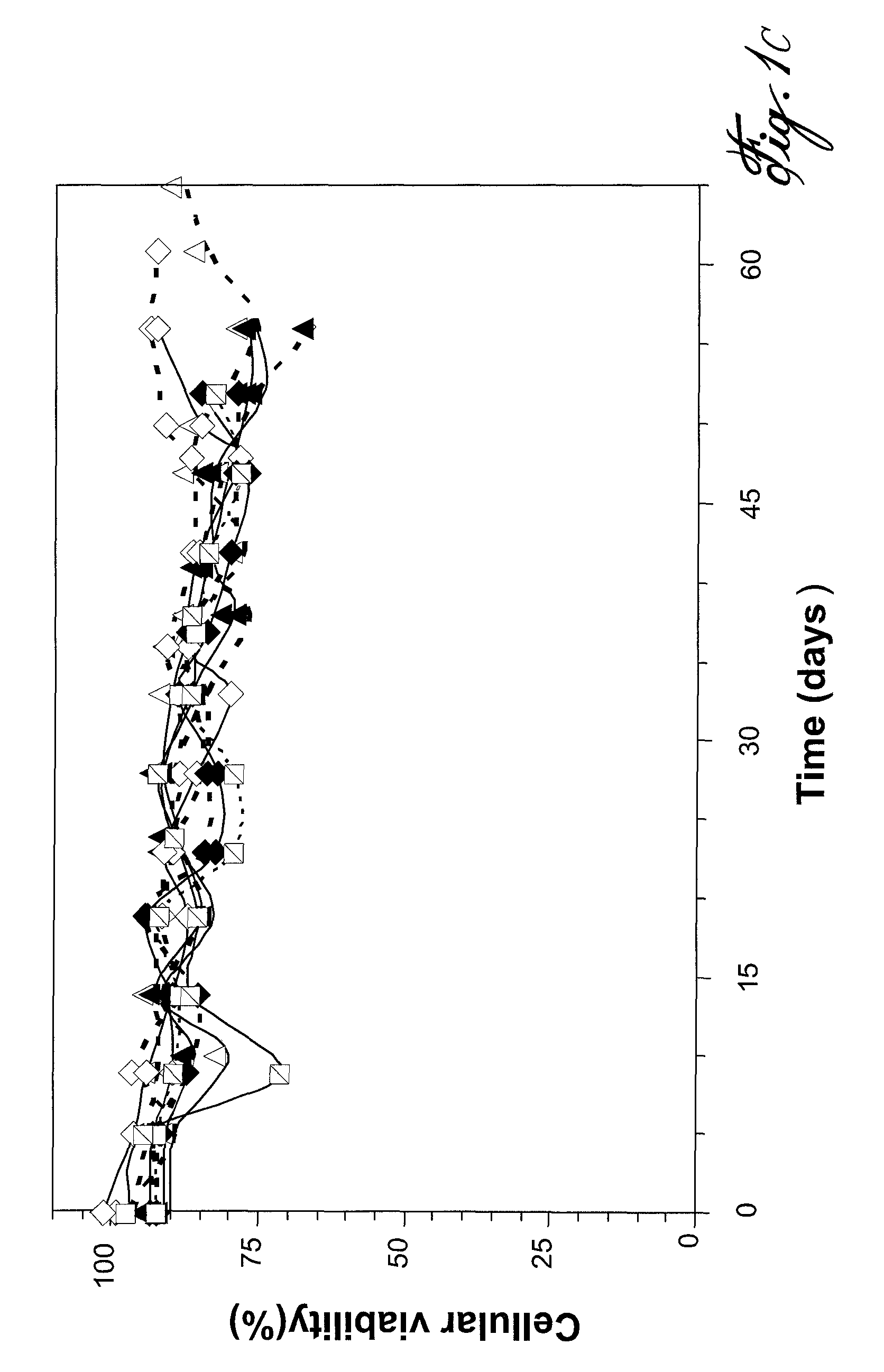Method for polyclonal immunoglobulin G production by human B cells
a technology of immunoglobulin and b cells, which is applied in the field of polyclonal antibody preparations, can solve the problems of inability to reliably detect antibodies, and inability to proliferate or secrete immunoglobulins, and achieves rapid expansion of cultured b cells
- Summary
- Abstract
- Description
- Claims
- Application Information
AI Technical Summary
Benefits of technology
Problems solved by technology
Method used
Image
Examples
example i
Methodology Used
[0049]Peripheral blood B-lymphocyte isolation and cell sorting. Regular blood donors who agreed to participate in this study have signed an informed consent. LRS chambers from Trima Accel™ collection systems (Gambro BCT, Lakewood, USA) containing peripheral blood mononuclear cells were recovered at the end of the apheresis procedure8. B cells were isolated from peripheral blood mononuclear cells (PBMC) as previously described7,8, using the StemSep™ CD19 cocktail (Stem Cell Technologies, Vancouver, Canada). B-cell purity, as determined by flow cytometry, was higher than 95% in all experiments reported herein. Depletion of IgM+ and IgD+ B cells was performed using an EasySep™ custom cocktail specifically targeting IgM and IgD surface molecules (Stem Cell Technologies). After depletion, IgD+ and / or IgM+ cells represented less than 5% of total cells.
[0050]Human B-cell culture and exposure to defined culture conditions. Purified B cells were seeded at 0.75×105 to 1.5×105 ...
example ii
Long-Term Expansion in Culture of Blood IgG+ B Cells
[0053]Blood B cells (CD19+) were depleted of IgD+ and IgM+ cells and stimulated in conditions of high CD154 interaction and their proliferation and differentiation were monitored during long-term culture. The results obtained are shown in FIG. 1. Ten independent experiments, corresponding to B cells from ten distinct donors, are presented in FIG. 1A. For all samples, residual IgD+ and IgM+ cells were less than 3% on day 0. During the exponential phase of growth, the mean Tgen or doubling time was 44 hours±9 hours. Additionally, expansion rates were remarkably constant in time, and consistent among the ten cultures (FIG. 1B). At the end of the culture period, cell viability was >80% (c.f. FIGS. 1C and D), and the final expansion factor, based on the expansion rate and seeding cell numbers, was ranging from 107 to 109 after 50 to 65 days of culture. During the culture period, the proportion of residual IgD+ cells remained <3%. Howeve...
example iii
Blood IgG+ B Cells are Highly Efficient at Ig Secretion
[0055]The secretion rate for each IgG isotype was determined in the middle of the culture period, i.e., from day 30 to 37. An average of 30 to 120 μg of total IgG was secreted per 106 cells over a 24-hour period. Interestingly, all gamma isotypes were present in relative proportions similar to those found in human blood, namely IgG1>IgG2>IgG3>IgG4, suggesting that long-term culture of IgG+ human B cells did not induce a bias in the secretion of IgG isotypes (c.f. FIGS. 2A and 3B).
[0056]In these assays, IgM secretion rate was ranging from 10 to 1000 ng / 106 cells / day, and was always corresponding to less than 5% of the total Ig content. The IgG concentration in the supernatant of the cell culture previously described in Examples II and III was assayed and the results generated might be an indicator of the capacity of the culture system to produce large quantities of human IgG. The cumulative secretion of the entire B-cell populati...
PUM
| Property | Measurement | Unit |
|---|---|---|
| concentration | aaaaa | aaaaa |
| concentration | aaaaa | aaaaa |
| concentration | aaaaa | aaaaa |
Abstract
Description
Claims
Application Information
 Login to View More
Login to View More - R&D
- Intellectual Property
- Life Sciences
- Materials
- Tech Scout
- Unparalleled Data Quality
- Higher Quality Content
- 60% Fewer Hallucinations
Browse by: Latest US Patents, China's latest patents, Technical Efficacy Thesaurus, Application Domain, Technology Topic, Popular Technical Reports.
© 2025 PatSnap. All rights reserved.Legal|Privacy policy|Modern Slavery Act Transparency Statement|Sitemap|About US| Contact US: help@patsnap.com



